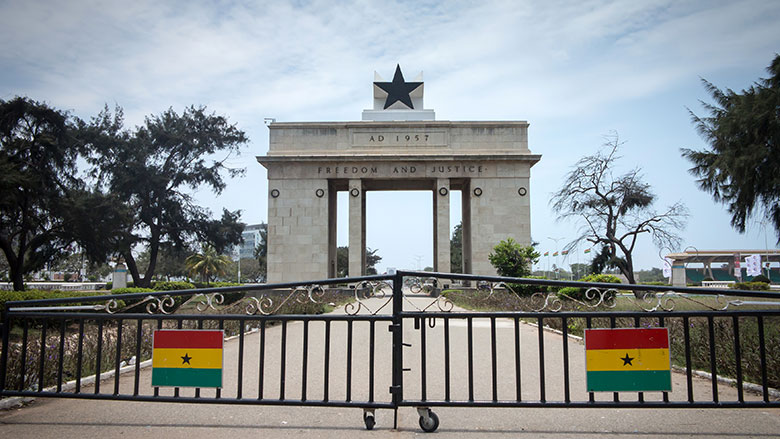ACCRA, December 12, 2017-The spreadsheet projected at the far end of the wall showed a scorecard the team had developed over a period of a few days. The discussion was lively, nobody held back, everybody chipped in as they talked through what financial ratios and ratings to use. It was a team of highly devoted experts: middle office professionals from the Ghanaian Debt Management Office (DMO) and energy sector specialists.
The task they had been charged with was not easy: developing a method for assessing and managing the risks of contingent liabilities stemming from government guarantees and on-lending practices. They would evaluate the scoring of the most prominent Ghanaian state-owned enterprise, the Volta River Authority (VRA), so they could assign a risk/cost profile to this public entity.
The team was steered by a seasoned practitioner, Mkhulu Maseko, the head of the credit risk team at the South African National Treasury, which was supporting the Ghanaian DMO in its efforts to develop the scorecard. The advice he gave was pragmatic and in-depth; he shared information on how South Africa assigned financial ratios or ratings, despite a limited availability of data. He demonstrated how to move, step by step, through a maze of institutional constraints—some derived from the relationship between companies, and others from limitations regarding background, quantitative training, or the number of staff.
Tailoring technical assistance to the country context
As part of an ambitious reform agenda supported by the International Monetary Fund, the Ghanaian Ministry of Finance had been looking for ways to better anticipate and manage fiscal risks in the broader public sector. Assessing and monitoring risks related to contingent liabilities was one of the areas to look at.
Earlier this year, a small workshop was organized by the Government Debt and Risk Management (GDRM) Program, a World Bank Treasury initiative targeting middle income countries which is funded by the Swiss State Secretariat for Economic Affairs. The program provides tailored technical assistance for member country’s debt management needs. For Ghana, the GDRM team decided to leverage the expertise of the South African National Treasury because it had recently developed a methodology for managing contingent liabilities risks. Ghana needed technical advice on a pragmatic level, not conceptual lessons, as it was looking for ways to improve fiscal sustainability.
Maseko would be a sound consultant for Ghana, and South Africa’s National Treasury was supportive of him providing the advice.
Presenting options and selecting the right methodology
With the involvement of the South African consultant, the GDRM program team laid out alternative options, illustrating comparable country examples and methodologies. The Ghanaian DMO officials decided on using the credit scoring methodology.
“Akin to scorecards used by international credit rating agencies, like Moody’s or Standard & Poor’s, the basic premise is to assess each entity on several factors, such as management quality, financial performance, business environment, and capital expenditure plan, and produce a single aggregated score,” said Sebastien Boitreaud, Financial Officer for the GDRM Program. “This score determines the credit risk of a given entity not paying back the borrowed amount in full and on time.”
The score card methodology is currently in use by Indonesia as well as South Africa to assess the contingent liability risk for their state-owned enterprises.
The team held two more workshops in Accra to develop an initial scorecard, and another later for improving the risk quantification of the initial scorecard for the Volta River Authority. It advised on public financial management law, and on moving from a theoretical credit score to a practical guarantee fee. “We were preparing for our new law that would codify most of our risk management activities,” said Samuel Arkhurst, Director of the Debt Management Division, Ministry of Finance, Ghana. “But before the law was passed we already had a very good idea of how we were going to implement elements of it.”
Putting guidelines in place
Ghana has put guidelines in place to steer decision making around guarantees and on-lending; these are part of a reform plan to consolidate public finances. When implemented, the guidelines will be one of the contributions toward improving fiscal sustainability and making the country’s economy more resilient to financial shocks.


